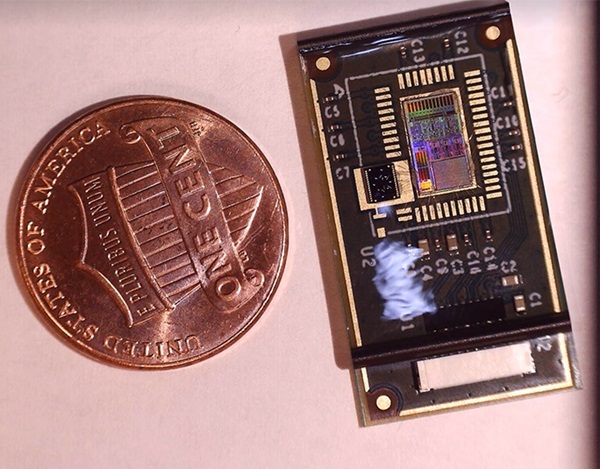Wearable Lung Patch Accurately Detects Asthma and COPD
Posted on 12 Sep 2024
Globally, asthma and chronic obstructive pulmonary disease (COPD) are significantly underdiagnosed, with rates ranging from 20-70% for asthma and up to 81% for COPD. Early detection and management are crucial for these chronic respiratory diseases. A common indicator of these conditions is wheezing, a high-pitched whistling sound caused by inflammation and narrowing of the airways. Physicians typically use digital stethoscopes, considered the gold standard, to listen to and record abnormal lung sounds like wheezing and crackles—clicking or rattling sounds that often accompany wheezing. They analyze these recordings to determine whether they capture wheezing, crackling, or normal breath sounds. Currently, the standard method for identifying wheezing involves a computerized time-frequency analysis, which relies on a checklist algorithm. However, this method is not comprehensive, resulting in some cases being missed. There is a need for an advanced technological solution that can serve as a screening tool in clinical settings and for remote patient monitoring, allowing physicians to intervene early.
Researchers at the Georgia Institute of Technology (Atlanta, GA, USA) have developed a deep learning (DL) model paired with a wearable patch equipped with a highly sensitive sensor capable of automatically detecting wheezing sounds. This DL model has the potential to classify respiratory diseases, potentially speeding up diagnosis and treatment. Unlike traditional microphones in digital stethoscopes, the microchip sensor in the wearable patch can detect tiny vibrations with high sensitivity and minimal distortion. For the development of the DL model, lung sound recordings were collected from 52 patients in an outpatient asthma clinic or hospital setting. Twenty-five of these patients were obese, a condition that can reduce the quality of traditional lung recordings.

To obtain the recordings, patients wore the miniature patch on up to nine different sites on their chest. Data was recorded from each location while the patient took deep breaths for 30 seconds. For comparison, physicians also took lung recordings using digital stethoscopes at the same chest sites. The recordings from both sources were reviewed in a blinded experiment, with physicians labeling whether they heard wheezing and providing a diagnosis after the clinical evaluation. The labeled wheezes from the digital stethoscope and the wearable patch were highly consistent, even for obese patients. These clinician-labeled data were then incorporated into the DL model, enabling it to distinguish between wheezing sounds and normal breath sounds.
The researchers compared the performance of the DL model to the standard time-frequency method for detecting wheezing, both when paired with the patch and the digital stethoscope. The results of the pilot study, published in BioSensors, showed that the DL model paired with the patch consistently outperformed the other methods, achieving the highest average accuracy, sensitivity, and specificity rates for wheeze detection at 95%, 96%, and 93%, respectively. This combination surpassed the time-frequency method paired with either the patch or the digital stethoscope, as well as the DL model paired with the digital stethoscope. The researchers envision two potential applications for the wearable patch framework: short-term screening in clinical settings and long-term home monitoring. They are currently developing a wireless version of the patch for remote monitoring, which could transmit data to a patient's physician to facilitate timely treatment.
“Our sensitive patch has many advantages over traditional wheeze detection, which struggles to detect all variations of wheezes and crackles, which can lead to misdiagnosis,” said Farrokh Ayazi, Ph.D., senior study author and a professor in electrical and computer engineering at Georgia Institute of Technology. “By incorporating data from these wheeze variations into a deep learning model, and by taking advantage of the sensor’s ability to eliminate ambient sounds, our detection method led to higher accuracy, sensitivity [it correctly identified the presence of a wheeze], and specificity [it correctly identified absence of a wheeze] compared to the standard time-frequency approach.”
Related Links:
Georgia Institute of Technology














